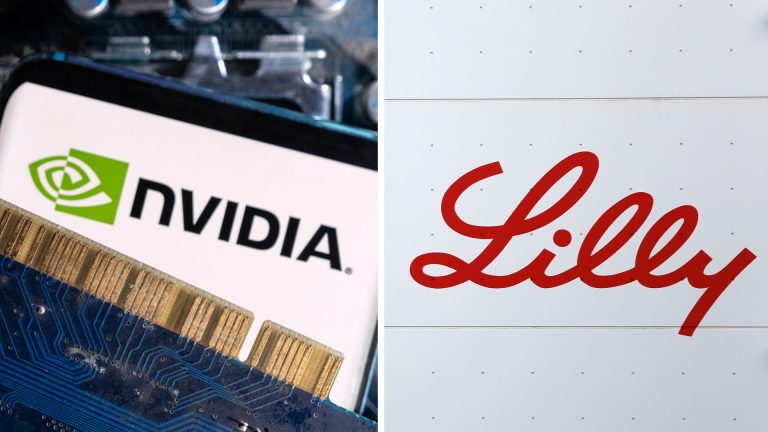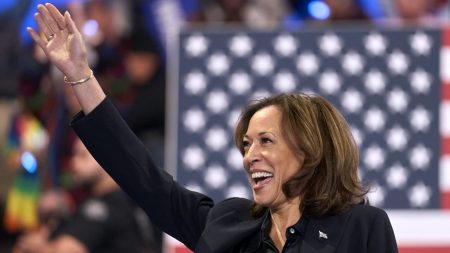Investors in red-hot Nvidia and Eli Lily face a high-class problem: What to do next with stocks that are on historic winning streaks? These two big winners of 2023 are back at it again this year. Nvidia has soared more than 40% in 2024, making it the best performer in the S & P 500, as it was last year. Eli Lilly has jumped almost 27%, building on its 59% gain in 2023. In February alone, the stocks are up about 15% and 14.5%, respectively. The long-term outlooks for Nvidia and Eli Lilly — both longtime Club holdings — brightened in recent weeks, leading to additional gains for the stocks. In Nvidia’s case, large customers and key partners reported results and issued guidance that the signal demand for its market-leading artificial intelligence chips remains fervent. Meanwhile, the launch of Eli Lilly’s all-important obesity drug Zepbound is off to a blistering start, as confirmed by Tuesday’s earnings report and 2024. Still, the rallies are dramatic, prompting some on Wall Street to suggest the stocks are moving too far, too fast , and are due for a correction. This leaves Club members who own Nvidia, Eli Lilly, or both, wondering how to proceed with their investments. Should you sell the whole position for a healthy profit and move on to a less-appreciated stock? Trim a little bit? Or maybe do nothing at all and just let it ride? (Our discipline is to generally avoid buying shares at or near all-time highs.) What to do next will vary from person to person based on his or her cost basis, time horizon, risk tolerance, and investment goals. However, there are two primary questions every investor should ask before taking action in a winning position. The specifics of these two stocks are extraordinary, but these two questions generally apply to any rallying stock. NVDA 3M mountain Eli Lilly’s stock performance over the past three months. Have you sold any stock recently? Start here: When was the last time you trimmed your position? The further the sale is in the rear-view mirror, the more you should consider doing a little profit-taking. Good investment discipline requires ringing the register along the way. There is a risk in getting greedy and watching profits earned on paper slip away. In the stock market, deciding when to sell is as important as deciding when to buy. As bright as the fundamentals are for Nvidia and Eli Lilly, there are no stocks completely immune to a sell-off, or at the very least a period of consolidation. Recall that shares of Eli Lilly fell more than 12% between Sept. 12 and Oct. 3 last year, putting them into correction territory — defined as a drop of at least 10% from a recent high. To be sure, that’s a very manageable decline, but it’s a reminder even stellar stocks are not one-way marches higher. Also consider that despite more than tripling in value last year, there was a period between mid-July and mid-December when Nvidia’s stock effectively went nowhere. Its close on Dec. 11 of roughly $465 a share was below its July 18 close, at $475 a share. Given our confidence in the companies’ multiyear time horizons, the argument here is not to sell the entire position. Far from it. It’s important to maintain a position large enough to meaningfully benefit from the potential upside. And there’s a balance that needs to be struck: If you’re constantly selling all your winners, then you may be stuck with a portfolio of losers. Right now, we feel good about the timing of our most recent sales in Nvidia and Eli Lilly. We made a small Nvidia sale in early January — along with a handful of other tech winners that had huge runs in 2023 — because we were worried about being greedy. Before that Jan. 2 trim, the stock had more than tripled since our last sale. The move wasn’t a violation of our “own it, don’t trade it” designation in Nvidia, one of only two stocks Jim Cramer has put in that camp along with Apple . We don’t say to never sell at all. The mantra conveys the rock-solid conviction we have in the company’s long-term success. But, as Jim frequently says, discipline always trumps conviction. Sept. 12 was the last time we sold some Eli Lilly shares , at nearly $592 each. Coincidentally, that was right before the stock began the aforementioned correction. Eli Lilly’s stock is currently up about 24% from our Sept. 12 sale level, based on Thursday’s close. LLY 3M mountain Eli Lilly’s stock performance over the past three months. Is it still underappreciated? At a fundamental level, the intention to hold onto any stock for some time suggests a belief that it will be worth more in the future than it is now. As Jim said this week, “Remember we have stocks that we think do not reflect the full long-term opportunity so we would be selling them before their full potential is realized.” In the case of Nvidia and Eli Lilly, we see considerable untapped potential and underappreciated drivers of future value, which is why we argue the current debate around these stocks should be “to trim or not to trim?” — rather than “hold on or head for the exits?” There’s always the possibility of a pullback on the near-term horizon, but under-the-radar opportunities for Nvidia and Eli Lilly — barring material, unforeseen developments — would make it easier to see through the turbulence. The software and services sales unit is arguably the most underappreciated part of the Nvidia story. A small, but fast-growing business for the leading AI chipmaker, it has the potential to be much larger over time and could increasingly help to offset some of the cyclicality inherent to the company’s bread-and-butter hardware sales. The core of Nvidia’s software strategy is AI supercomputer accessible through a web browser known as DGX Cloud. The company debuted DGX Cloud in March 2023, and its availability has increased as more cloud-computing providers, like Microsoft ‘s Azure and Amazon Web Services, bring the offering to their platforms. On Wall Street, investors generally consider software and services revenue streams to be more stable and more profitable than hardware. As a result, they’re usually willing to pay a premium — or, in Wall Street parlance, a higher “multiple” — for software-related earnings. As Nvidia’s software and services business becomes a more significant part of the overall company, that could boost the stock’s valuation. Nvidia’s earnings report Feb. 21 will likely shine a light on the growth of the business. In November, CFO Colette Kress said the business was on track to generate $1 billion in annualized revenue by year-end , up from the “hundreds of millions of dollars” run rate disclosed in August. An underappreciated aspect of Eli Lilly’s growth prospects is the potential that the class of drugs known as GLP-1s can treat other conditions besides type-2 diabetes and obesity. Lilly’s leading GLP-1 is tirzepatide, which is approved under the Zepbound brand to treat obesity, and the Mounjaro brand for type-2 diabetes. The obesity market alone is projected to be enormous . Some Wall Street research firms, including Goldman Sachs, estimate it could be worth $100 billion by 2030 . In 2024, sales of GLP-1 obesity medications are expected to total $11.5 billion, according to analyst estimates compiled by FactSet. Lilly rival Novo Nordisk’s drugs, primarily Wegovy, account for about 80% of those sales projections. The consensus estimate for Lilly’s Zepbound is currently about $1.88 billion, according to FactSet. But the market for GLP-1s could grow larger if they’re approved for other purposes, such as treating sleep apnea and lowering the risk of severe cardiovascular events — as Novo Nordisk’s Wegovy has been shown to do. Data released this week indicated that Lilly’s tirzepatide showed promise in treating fatty liver disease in a midstage trial. And, in a note to clients Wednesday, analysts at Leerink highlighted a study that suggested diabetic patients on GLP-1s — including tirzepatide — were less likely to be diagnosed with depression after beginning to take the drugs compared with people who were not receiving the class of drugs. These recent developments offer further evidence that we’re just scratching the surface with GLP-1s. For this reason, we stay invested in Eli Lilly, as tirzepatide is in the early days of its commercial launch and the company advances its next-generation versions of the drugs — including one in pill form — through the clinical trial process. (Jim Cramer’s Charitable Trust is long NVDA and LLY. See here for a full list of the stocks.) As a subscriber to the CNBC Investing Club with Jim Cramer, you will receive a trade alert before Jim makes a trade. Jim waits 45 minutes after sending a trade alert before buying or selling a stock in his charitable trust’s portfolio. If Jim has talked about a stock on CNBC TV, he waits 72 hours after issuing the trade alert before executing the trade. THE ABOVE INVESTING CLUB INFORMATION IS SUBJECT TO OUR TERMS AND CONDITIONS AND PRIVACY POLICY , TOGETHER WITH OUR DISCLAIMER . NO FIDUCIARY OBLIGATION OR DUTY EXISTS, OR IS CREATED, BY VIRTUE OF YOUR RECEIPT OF ANY INFORMATION PROVIDED IN CONNECTION WITH THE INVESTING CLUB. NO SPECIFIC OUTCOME OR PROFIT IS GUARANTEED.
Investors in red-hot Nvidia and Eli Lily face a high-class problem: What to do next with stocks that are on historic winning streaks?
Read the full article here









